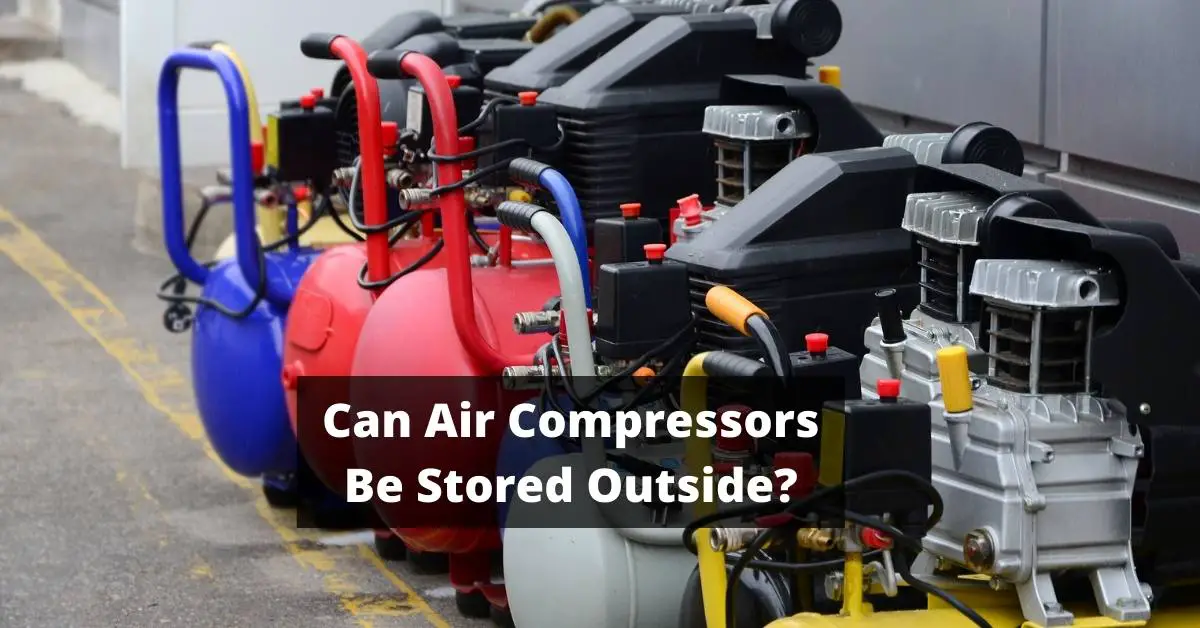Have you ever looked at an old AC compressor and wondered if you could convert it into an air compressor? Well, wonder no more! As someone who loves DIY projects, I can tell you that converting an AC compressor to an air compressor is not only possible but also quite easy.
It’s like turning a caterpillar into a butterfly! With just a few tools and some basic knowledge of how compressors work, you can have your very own air compressor up and running in no time.
Not only will this save you money on buying a brand new one, but it also gives you the satisfaction of knowing that you built something useful with your own two hands. So let’s dive in and see how we can transform that old AC compressor into a powerful air compressor!
Gather Your Materials
Get all the stuff you need together before starting. To convert an AC compressor to an air compressor, you’ll need a few materials. First, you’ll need a suitable compressor that can be converted. This type of compressor will have a clutch on the front that can be removed or disengaged.
You’ll also need some basic tools like a socket set, screwdrivers, pliers, and wrenches. Make sure you have a good selection of sizes so that you can tackle any bolts or nuts that may come your way. You may also want to consider getting some lubricant and cleaning supplies to keep everything running smoothly.
Lastly, don’t forget about safety gear! When working with compressors and other machinery, it’s important to protect yourself from harm. Wear gloves and eye protection at all times when handling parts or operating the machine.
With everything gathered up and ready to go, it’s time to move on to disassembling the AC compressor and preparing it for conversion into an air compressor.
Disassemble the AC Compressor
Now it’s time to take apart the system that circulates refrigerant and generates cool air, so you can access its internal components. Begin by removing any remaining refrigerant from the AC compressor. You can do this by unscrewing the valves or taking it to a professional who can safely remove the refrigerant.
Next, use a wrench to remove all bolts and screws holding the compressor together. Keep track of these small parts as you’ll need them later on. Once all bolts have been removed, gently separate each piece of the compressor until you’re left with just the main housing unit.
Be sure to inspect each component for any damage or wear and tear before proceeding with converting your AC compressor into an air compressor.
Now that your AC compressor has been disassembled, it’s time to prepare it for air use by cleaning and oiling its internal components.
Prepare the Compressor for Air
With the refrigerant removed and all bolts and screws unscrewed, let’s dig into the guts of this machine to give it new life as a powerful tool.
Before we can start using our AC compressor as an air compressor, we need to prepare it for the task at hand. The first step is to take off the clutch and pulley assembly from the compressor shaft. This can be done by either prying it off with a screwdriver or by using a puller tool.
Next, we need to remove the valve plate assembly from the compressor body. This will allow us to access the reed valves inside which must be removed before using compressed air instead of refrigerant gas. Be sure to keep track of any small pieces such as springs or metal plates that may come loose during disassembly.
Finally, we need to clean out any remaining oil or debris from inside the compressor body. This can be done with compressed air or by wiping down all surfaces with a clean rag. Once everything is cleaned and inspected for damage, our AC compressor is ready to be transformed into an efficient air compressor.
Now that our AC compressor has been prepared for its new role, it’s time to install an air tank so we can start putting it to use in various tasks around our workshop or garage.
Install the Air Tank
Ready to power up your tools? Let’s move onto the next step and attach a tank to our newly transformed machine.
To do this, you’ll need an air tank and some fittings. First, locate the pressure switch on your compressor and remove it. Then, screw in a tee fitting where the pressure switch was located. Attach a ball valve to one end of the tee fitting and a quick disconnect fitting to the other end.
Now it’s time to connect the air tank. Screw in another tee fitting onto the ball valve we just installed. Attach one end of an air hose onto this tee fitting and connect the other end to your air tank using a quick disconnect fitting. Make sure all connections are tight and secure before moving on.
Finally, close both valves so that no air can escape from either side of the system.
You’re now ready for reassembly! In the next section, we’ll go over how to put everything back together properly so that your newly transformed compressor is ready for use once again.
Reassemble the Compressor
Let’s put everything back together so that this machine is ready to power up your tools once again. Reassembling the compressor is a crucial step in converting an AC compressor into an air compressor.
Begin by placing the pulley onto the shaft and tightening it with a bolt.
Next, reattach the clutch using its original screws and connect the electrical wire to it as well. Make sure that you’ve connected all the wires correctly and securely before moving on to the next step.
Finally, attach the hoses to both ends of your newly installed tank and tighten them with clamps. You’re now ready to test your air compressor and see if it can deliver enough pressure for your tools!
With everything assembled correctly, we can move on to testing our new air compressor. But before you start testing, make sure that all connections are tight and secure.
Turn on your machine and let it run for a few minutes to ensure that there are no leaks or other issues. With these steps completed successfully, you’re now ready to put your new air compressor through its paces!
Test the Air Compressor
You’re about to see the power of your newly assembled machine as you put it through rigorous tests. Before testing, make sure that all connections are tight and secure.
Turn on the compressor and let it run for a few minutes to ensure that there are no leaks or unusual noises.
Once you’ve confirmed that everything is working properly, it’s time to test the air compressor’s performance. Attach an air tool or accessory and adjust the pressure regulator accordingly. Start with a low pressure setting and gradually increase until you reach your desired level.
As you use your new air compressor, keep in mind that regular maintenance is key to ensuring its longevity. Check oil levels regularly and change them as needed. Keep the unit clean and free of debris, and store it in a dry location when not in use.
With proper care, your converted AC compressor can provide reliable service for years to come.
Tips and Tricks for Maintenance and Safety
As someone who’s converted an AC compressor to an air compressor, I know the importance of proper maintenance and safety precautions.
To ensure longevity, it’s crucial to regularly check and clean the air filter, drain any moisture from the tank, and lubricate moving parts as necessary.
Additionally, it’s essential to follow safety guidelines such as wearing eye protection and never exceeding the recommended pressure limit of the compressor.
By taking these steps, you can enjoy safe and reliable use of your converted air compressor for years to come.
Proper Maintenance for Longevity
To keep my converted AC compressor functioning at its best, I make sure to perform regular maintenance tasks. Cleaning and lubricating the moving parts is crucial in keeping it running smoothly and avoiding costly repairs.
I also check for any signs of wear or damage on the belts, hoses, and other components. Any issues are addressed immediately to prevent further damage.
In addition to regular maintenance, safety precautions should also be taken when using an air compressor. It’s important to read the user manual thoroughly before operating the machine and wearing appropriate protective gear such as safety glasses and earplugs.
By taking proper care of my machine and following safety guidelines, I can ensure that my converted AC compressor will last me for years to come.
Safety Precautions for Use
Make sure you take all necessary precautions before using this powerful machine to keep yourself safe and make the most out of your tool. First, always wear appropriate safety gear such as eye protection, gloves, and earplugs. The air compressor can generate a lot of noise and debris that could potentially harm you if not properly protected.
Secondly, be mindful of the pressure settings on your air compressor. Over-inflating tires or other objects can cause them to burst, which could lead to serious injury. Always check the recommended pressure levels for whatever you’re inflating and adjust accordingly.
Additionally, never leave your air compressor unattended while it is running and always turn it off when not in use. By following these simple safety precautions, you can ensure a safe and productive experience with your converted AC compressor turned air compressor.
Conclusion
So there you have it, folks! Converting your old AC compressor into an air compressor is a great way to repurpose an unused item and save some money in the process.
With just a few tools and some elbow grease, you can have a fully functioning air compressor ready to tackle any DIY project or home improvement task.
Remember to always prioritize safety when working with power tools and compressed air. Wear appropriate protective gear such as gloves and goggles, and make sure all connections are secure before operating the compressor.
Regular maintenance will also ensure that your new air compressor lasts for years to come. So why not give it a try? You may be surprised at just how handy having an air compressor can be!


